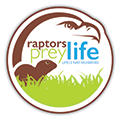Project objectives
Project objectives
1. This project aims to reinforce the on-going efforts to strengthen the European core populations of Aquila heliaca and Falco cherrug, globally threatened species on Annex I of the Birds Directive also identified as priority species for LIFE-Nature projects. Thanks to EU financial support, these populations have stabilised and increasing while the European and global populations are still decreasing. However unfortunately in contrary to the birds of prey population their main food sources, the small mammals (Spermophilus citellus, Cricetus cricetus, and Lepus europeus), are continuously decreasing. The ongoing LIFE09NAT/HU/000384 project’s findings justify the importance of these species in the diet of these raptors. Even today the small mammals are the majority of the prey especially the S. citellus what is still more than 1/4th of food as an average. The satellite tagged birds of the LIFE projects also justified that these birds are frequently feeding outside of the SPAs especially where small mammals are more abundant. (See attached maps.) Therefore the project aims to stop the decline of the existing small mammals’ population where they are exists and works as a demonstration project in some actions to prepare the background scientifically for the possible future increase of those populations based on the best practices applied.
2. The project aims to increase public awareness towards the birds of preys and especially their small mammals prey too.
3. The project also aims to demonstrate how to adjust different nature conservation priorities when we carefully consider the life style and habitat demand of Sicista subtilis trizona and Nannospalax (superspecies leucodon) strictly protected species in Hungary and adjusting our work for the benefit of all species.
Actions and means involved:
This project will focus on the evaluation of the genetic status and the stress status of S. citellus colonies and especially the fragmented populations. Based on these data captive breeding program and gene bank from captive and natural colonies will be established. The genetic status of target populations will be improved by planned introductions of animals of known allelic composition. Veterinarian surveillance of potential food sources will be also established.
Suitable land will be purchased, reconstructed to improve the carrying capacity for prey species and S. citellus repatriated there. Small patches of lands will be leased also to create stepping stones between Natura 2000 sites to provide connection and habitat for preys like Cricetus cricetus, and Lepus europeus. Airport’s grassland management guideline and recommendation how to improve the water management system on S. citellus habitat will be prepared. Land Stewardship Advisory Service will be set up to assist farmers and hunters on land use and predator management issues. Hunters will be encouraged to catch predators by lent traps. The movements of S. citellus will be mapped by satellite transmitter. An intensive communication program will start with a baseline survey of the public awareness and targeting farmers, hunters and local citizens and national level, erection of attention signs, will increase awareness in the target groups and create support for conservation measures to the target species. To evaluate changes in population trends and to assess the success of conservation actions of the project a comprehensive monitoring program including satellite tracking and photo trapping will inform about the changes in population parameters of the target species.
Expected results
As a result of the project the main reasons of the decrease of small mammals will be better understand and the decrease of these main food sources of A. heliaca and F. cherrug will be stopped. The genetic and health survey would start. Gene banks will be established. The fragmented small populations will be improved. Potential habitats will be reconstructed and about 2000 S. citellus will be reintroduced from strong viable populations. The fragmented populations will be connected by stepping stones. The project will implement the recently endorsed European S. ciltellus Species Action Plan. The public awareness would be increased towards these species.
















